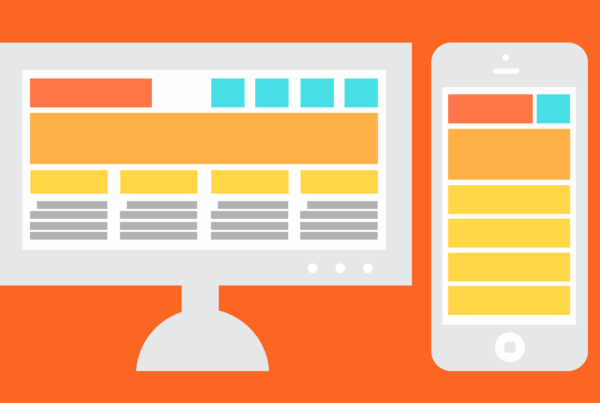In today’s digital age, mobile apps are the lifeblood of our daily routines. Whether you’re ordering food, catching up on the news, or staying connected with friends, chances are you’re using a mobile app. As an app developer or designer, crafting a user-friendly and engaging mobile app is essential for success. In this blog post, we’ll explore valuable insights and practical tips to help you create a mobile app that users will love.
Understanding the Importance of Mobile App Design
Before we dive into the tips for creating an exceptional mobile app, let’s understand why design matters so much. Your app’s design is the first thing users notice, and it greatly influences their overall experience. A well-designed app can:
- Enhance User Satisfaction: A user-friendly and visually appealing design makes users happy. It keeps them engaged and encourages them to use the app regularly.
- Boost Retention: A good design can help retain users. If your app is easy to navigate and visually attractive, users are more likely to return.
- Simplify User Interaction: A well-thought-out design simplifies user interactions. It reduces the learning curve, making the app intuitive and easy to use.
- Support Your Brand: The design reflects your brand identity. A consistent, well-designed app can strengthen your brand image and credibility.
Mobile App Design Tips
Mobile apps have become an integral part of our lives, offering convenience, entertainment, and essential services at our fingertips. However, creating a successful mobile app is not just about its functionality – design plays a pivotal role in its usability and overall user experience. In this post, we’ll explore practical tips to help you create a mobile app that users find both user-friendly and engaging.
- Know Your Audience: Understanding your target audience is the foundation of a successful app. What are their preferences, pain points, and expectations? Conduct user research, create user personas, and gather feedback to tailor your app’s design to your users’ needs. For example, the dating app Tinder gained popularity by focusing on the younger, tech-savvy demographic and delivering a simple, swiping interface that resonated with them.
- Keep Navigation Intuitive: Navigation is a critical component of user-friendliness. Users should be able to find what they need quickly and effortlessly. Opt for familiar navigation patterns and place essential features prominently. Airbnb’s app is a great example of intuitive navigation. It allows users to filter search results and book accommodations with minimal effort.
- Prioritize Loading Speed: Slow-loading apps can be frustrating and lead to high abandonment rates. Optimize your app’s performance by minimizing unnecessary animations, compressing images, and reducing HTTP requests. For instance, the news app Flipboard loads articles seamlessly, providing a swift and satisfying user experience.
- Focus on Visual Hierarchy: A well-established visual hierarchy guides users through the app, emphasizing important elements and content. Use contrasting colors, font sizes, and layouts to direct attention to key areas. The weather app Dark Sky, for example, highlights weather conditions and forecasts prominently, helping users quickly access essential information.
- Embrace Minimalism: Minimalist design is a trend that continues to thrive. It emphasizes simplicity, clean lines, and a clutter-free interface. Remove any unnecessary elements, prioritize content, and create a sleek and elegant design. Instagram’s design, characterized by its uncluttered layout and focus on visual content, epitomizes minimalist app design.
- Optimize for All Devices: Your app should work seamlessly on various devices and screen sizes. Adopt responsive design practices to ensure your app looks and functions well on both smartphones and tablets. WhatsApp, for instance, offers a consistent user experience across different devices, making it a go-to choice for messaging.
- Leverage Gestures: Gestures can enhance the user experience by providing natural and intuitive ways to interact with the app. Incorporate swipe, pinch, and tap gestures where appropriate. For instance, Google Maps lets users zoom in and out with a pinch gesture, making navigation more interactive.
- Provide Feedback: Users appreciate feedback that confirms their actions. Incorporate visual and audio feedback, such as button press animations or subtle sounds when interacting with elements. The Airbnb app, for example, provides a satisfying animation when a booking is successfully made, ensuring users feel confident about their actions.
- Test and Iterate: Continuous testing and improvement are essential. Run usability tests, gather feedback, and release updates based on user insights. Airbnb, for instance, frequently updates its app to enhance the user experience and resolve issues reported by users.
- Ensure Accessibility: Make your app accessible to everyone, including individuals with disabilities. Implement features like screen reader support, voice control, and adjustable font sizes. The accessibility features of the iPhone have set a high standard, making it more inclusive and user-friendly.
- A/B Testing: A/B testing allows you to compare two versions of your app’s design to determine which one performs better. This data-driven approach helps you make informed design decisions. Mobile apps like Spotify regularly conduct A/B tests to refine their user interface and enhance the overall user experience.
- Consistency is Key: Maintain consistency in design elements, such as colors, typography, and icons, throughout your app. A consistent design creates a cohesive and familiar user experience. The Apple Music app, for example, maintains design consistency across its various sections and features.
- Engaging Onboarding: A well-designed onboarding process introduces users to your app’s features and functionality. Make it engaging, informative, and user-friendly. Duolingo, a language learning app, provides an interactive onboarding experience that teaches users the app’s basic features while keeping them engaged.
- Personalization: Personalization enhances user engagement. Tailor content, recommendations, and user interfaces based on user preferences and behavior. The music streaming app, Pandora, offers personalized radio stations based on a user’s musical tastes, creating an engaging listening experience.
- Focus on Security: User trust is paramount. Ensure that user data is secure by implementing strong security measures. Regularly update your app to address security vulnerabilities and maintain user confidence. The banking app, Chase Mobile, emphasizes security by requiring multi-factor authentication and biometric login options.
Creating a successful mobile app goes beyond coding; it requires thoughtful design that prioritizes user experience. By implementing these tips and continuously refining your app’s design based on user feedback, you can create an app that not only meets your users’ needs but also keeps them engaged and satisfied.
Designing a mobile app that is both user-friendly and engaging is a multifaceted process. It requires a deep understanding of your audience, a commitment to usability, and a willingness to iterate and improve. By following the tips and examples discussed in this post, you can create an app that not only meets but exceeds user expectations. In a competitive app market, a user-friendly and engaging design can be the key to success. So, get started, embrace these design principles, and craft an app that users will love. Happy designing!



